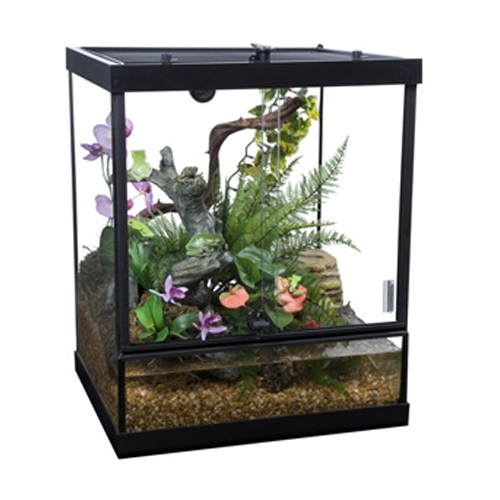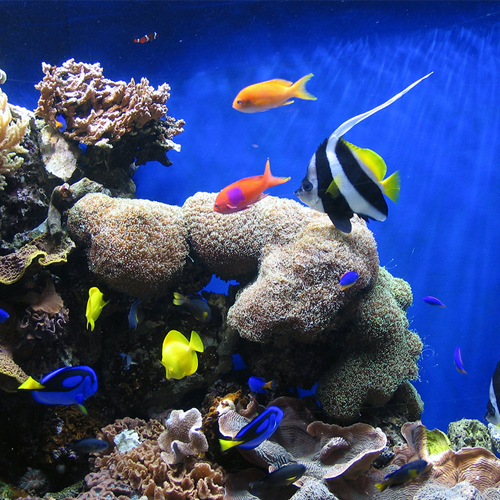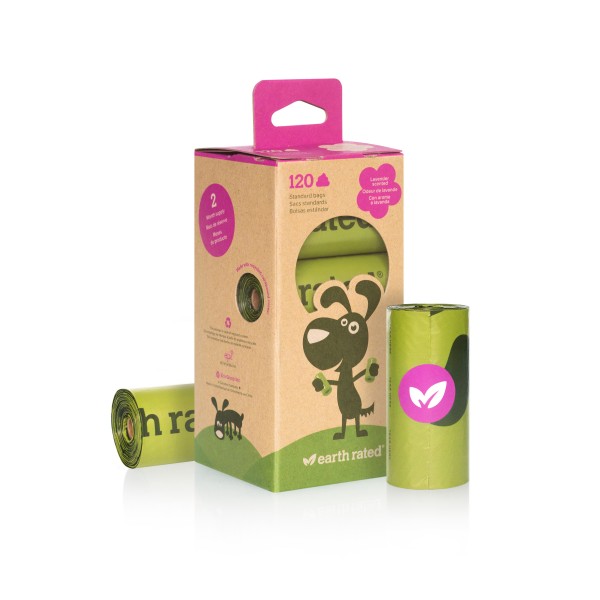
Snakes, reptiles, turtles, tortoises and amphibians all fall into the general category of reptiles. Each has different requirements for housing, feeding and temperature. The purpose here is to provide our customers with an overview of the necessary requirements of reptiles in general.
Most people own, or are at least familiar with, the more social pets. Cats, dogs and other mammals are the most common pets and enjoy handling. In fact, these pets do poorly if not given sufficient human contact – petting and playing are necessary. Reptiles fall into another category all together. In general, reptiles do not thrive on handling, since they are not as social as cats or dogs. Reptiles should only be handled in an effort to keep them tame since too much handling is stressful to them.
In general, it is probably best to keep reptiles in an aquarium. Ten gallon aquariums are good to start with, but remember that some reptiles (like snakes) will quickly grow beyond the dimensions of his size tank. The glass sides will help prevent injuries due to rubbing. A screen cover, along with locking tabs, is a necessity for all reptiles. Not only does it keep them in, but it also keeps other pets and curious fingers out.
Most reptiles have different temperature requirements, but since they are cold blooded animals, they need a heat source that they can regulate. The easiest way to accomplish this is with a plug in electric stone that will provide a constant heat source. The reptile can then use this as a means of keeping his body at the best temperature. Incandescent reflectors are good for lighting, and will provide some heat, but since they should be turned off at night (because the reptile needs a day/night cycle as we do) they are less than adequate as a heat source.
Something should be placed at the bottom of the aquarium. You should avoid anything that can absorb moisture – this would include cat litter, corn cob, etc. Products that absorb moisture could cause a potential bacterial build-up as moisture and excrement collect. This can be harmful to your pet. Remember, also, that these products may be taken in with the food and cause additional problems. The key to proper care is ease of cleaning – and keeping it that way. For this reason, products like newspaper, Astroturf or products designed for reptile environments will provide the best bedding. All are easy to keep clean – but Astroturf is more pleasant to look at.

When cleaning your reptile’s cage, use a diluted chlorine bleach solution (1 part of chlorine bleach to 30 parts of water). It is extremely important to remember, for the health of your pet, to make sure that the cage is always kept dry before returning your pet to it. This includes the aquarium itself and the bedding material that you washed. Pine based products should be avoided because they are toxic to many types of reptiles.
Clean water should always be available in a bowl, heavy enough so it cannot be tipped over. Your reptile should also have some place where he can hide; a flower pot or a box. Some reptiles require a rock or a branch to rub against when shedding. Make sure these are large enough not to tip over when the reptile climbs on them.
As a rule, reptiles of the same type can live together, but to minimize problems, it would probably be best to keep them in separate cages. This avoids territorial battles and aids in cleaning.
Preventatives and mediations are available when necessary. A clean, well maintained cage is the best preventative and should provide you with a healthy, interesting pet that will live for many years.
In one location, you could have representatives from South America, North America, the Far East and Africa. Tropical fish come from all over the world and yet a community aquarium could be set up to house many different species, colour, and sizes. The optimum requirements for tropical fish vary from species to species, but the home aquarium can be set up to accommodate the wide variety of tropicals available.
Once you get home with your new aquarium, find a suitable location in which to set it up. If you did not purchase a stand, make sure the tank is set up on a level surface and away from electrical appliances and away from direct sunlight. All four corners of the aquarium must be on the surface to prevent pressure cracks on the glass. The tank should also be placed on a sturdy surface because water weighs in excess of eight pounds per gallon. This means that a ten gallon tank, with gravel, can weigh about one hundred pounds.

If you purchased an aquarium stand, find a location that is level. Place the tank and stand near the wall, but far enough away in order to accommodate the filters, heaters and wires that will go behind the tank. Put the background on the tank now, it’s a lot easier when the tank is empty.
Rinse the gravel in cool water. Hot water will cause the colours to run. If you are using an under-gravel filter, set it up and locate the airline tubing before you add the gravel. If you slope the gravel toward the rear of the tank, you will create an illusion of depth once the tank is filled.
Put in any rocks that you may have purchased. It is best to use rocks purchased in a pet store. Rocks found outside may contain minerals that could contaminate the tank. Never use coral or seashells in the fresh water aquarium. They will make the water hard and alkaline for as long as they are in the tank – a condition you want to avoid. Furthermore, these shells are not natural for the fish and they could injure themselves on them.
You can set up the filter now, whether you are using a corner filter, sponge filter or outside power filter. Artificial plants and ornaments can be placed at this time. Any aerating ornaments can be added now while it is easier to work with no water. Set up the heater but don’t plug in. Get a heater that will provide approximately 5 watts per gallon of water; for example, a 10 gallon tank = a 50 watt heater.
Once all the accessories are placed, you can add water to the tank. Add the water gently so as not to disturb the gravel and ornaments. Tepid water is best. Once the aquarium is filled you can start the filter and aeration. Wait about an hour before you plug in the heater, this will allow the outside glass to reach the temperature of the surrounding water. The temperature range for the tropical tank should be 74 to 78 degrees and can be monitored using a reliable aquarium thermometer.
Add the reflector top. If incandescent, leave the light on only about 4 hours per day. Too much light will contribute to algae production in the tank.
Allow the tank to run for at least two days before any fish are added. There are, however, a number of things that you can do at this time. Add a chemical to reduce the chlorine and heavy metals found in tap water, both of which are harmful to tropical fish. A chemical that increases the protective coat on tropicals and adds electrolytes to the water can also be used.
The pH of the water should be checked and adjusted. Since there is usually a variety of tropicals, all with different requirements a pH of neutral usually works best. You can check and adjust the pH of the aquarium water using inexpensive pH kits.
When the time arrives to add the first fish to the tank, there are just a few guidelines to keep in mind. It is always best to add only a few fish at a time, with at least a few days between each new addition. This may mean that your aquarium will look a little empty for a while but the fish will do better (ammonia levels will stabilise, etc.). The first fish should be fairly hardy variety that appeals to you (zebra danios make a good first fish). Some people wait for scavengers (like catfish) until the second or third additions, because until then, there is little for them to scavenge. Keep in mind that scavengers only eat food that falls to the bottom of the aquarium – they will not clean up after the other fish. Some fish are schooling fish (like tetras) and do better when kept in groups, others are not compatible with other fish in the aquarium or may grow to become aggressive. Ask your pet dealer which fish will be compatible.
This method should help in introducing new fish into the aquarium:
1) Take the new fish home as soon as possible. Too much time spent in the bag causes stress and increases the acidity of the water.
2) Open, then float the bag for about one-half hour. This makes the temperature of the water in the bag the same as the temperature of the water in the aquarium.
3) While the bag is floating, add small amounts of water every ten minutes or so, until the water in the bag is about doubled. You can then introduce the new fish into the aquarium.
If adding fish to a tank that already has fish (or when adding small fish to the tank where there are larger ones), it might be a good idea to feed the original tank inhabitants before the new fish are let out of the bag.
Proper maintenance of the aquarium will help eliminate problems before they occur. About once a month, siphon – from the bottom – about one quarter of the water from your aquarium. A gravel cleaning siphon works best. Remember that water that may have evaporated should not be considered as part of the one quarter. You can clean the sides of the tank with a sponge that has never been used with soap. Replace with water that has been dechlorinated, and is as close as possible to the temperature of the water in the tank.
The monthly maintenance schedule is especially important. Uneaten food and fish waste breaks down in the aquarium to produce ammonia. Ammonia weakens and kills tropical fish. By siphoning off one quarter of the water, the toxic levels of ammonia will be reduced. Furthermore, as wastes from the gravel are removed, your tank will be clearer and cleaner.
Watch your fish for any signs of stress or disease, especially the new additions. Look for white spots (about the size of a grain of salt) on the bodies of your fish, fins and clamped to the sides of the body, white or ragged fins, or lack of appetite. Early detection of these trouble signs will enable you to get the proper medication for the particular problem. You will find these products at your area Ruffin’s Pet Centre.
TURTLES / TORTOISES
General Questions
Do Ruffin’s stores sell items made in China?
Products made in China are almost impossible to avoid in any store these days so yes Ruffin’s stores do have products from China. With suppliers bringing things in from all over the world we will inevitably have products like toys, dishes, aquarium ornaments, cages etc. from China. What we don’t have are any foods or treats or chews from China
Does Ruffin’s carry raw food for dogs?
Yes most of the Ruffin’s store carry frozen raw diets available in a variety of meats.
How many Ruffin’s stores are there?
There are currently 14 Ruffin’s stores located though out Southern Ontario. Check our store locator for one near you.
Cats
My cat had FUS crystals, he had the operation to remove them and is now on a food from the Vet that is very expensive. Is there an alternative?
I hate to go against what your Vet is telling you so I will suggest you discuss my answer with them before switching foods. That being said my answer is yes there are alternatives. Companies like Hills and Royal Canin that make the Vet diets also make Urinary diets that are available at pet stores. Stop in at your local Ruffin’s and our staff will be glad to show you your choices.
Should I give my cat catnip?
Sure, catnip is an all natural product that contains no harmful ingredients. Pick out a good quality catnip or catnip toy (hold it up to your nose you should be able to smell it) and introduce it to you cat. Observe your cat and if you feel they get a little too excited for your liking simply stop using it. Catnip is not addictive and will cause and long term affects. I should note that some cats have little or no reaction to catnip but don’t be disappointed just find something else you cat likes.
I just got a new kitten what kind of cat litter should I use?
The world of cat litter just keeps expanding with new offering made of the most unusual materials popping up all the time. The most popular litter is clumping clay litter, low cost combined with great odor reduction keep this litter on top. How ever we don’t recommend clumping litter for young kittens as they tend to ingest the litter while grooming. For kitten I prefer a regular non clumping clay letter or one of the alternative litters made from Pine, Wheat, Corn or grass like Smart Cat.
Should I feed my cats wet food or dry?
This is an endless debate and I see nothing wrong with feeding either food or even mixing the two. The quality available in dry foods today would have astounded me 20 years ago. It is now easy to find good diets containing high levels of protein that cats readily eat on any pet store’s shelves. Canned or wet foods remain popular with many due to the varied diets and healthy ingredients they offer to the cats we love. For me it comes down to a matter of preference and time. Dry foods offer perfectly healthy balanced diets with convenience at a slightly lower cost than canned.
Dogs
My dog is finicky and I have a hard time finding a food she likes. She like Beneful but I want to feed something better, what food works for finicky dogs?
This is one of the most asked questions in our stores. Finding a food your dog loves to eat can sometimes be very hard. All I can suggest is that you experiment. There are lot of very high quality palatable foods out there. Try different protein sources like Duck, Fish or Venison. One of the foods I often recommend for fussy eaters is Oven baked Tradition OBT for short. Oven baked is the only company that baked their food in ovens like you would a cookie the result is a mouth feel and bite many dogs like. Switching off Beneful can be difficult, you see Beneful uses sugar in their food, there’s no reason for it except dogs love the taste, it’s not good for them and it can make it hard to get dogs to change foods but the health benefits are worth the effort.
My dog has fleas what do I do?
External parasites like fleas, ticks, and mosquitos can make your pets life miserable and can carry disease. My preference is to use flea drops from companies like Zodiac and Infestop. They work quickly and keep on working for up to a month. Just make sure you get the drops right down to the skin when applying. For fleas around the home I prefer the 1-2 punch of a fast acting less expensive insecticide using pyrethrins in main areas along with a residual insecticide for cracks and crevices, under furniture etc. where fleas like to hide. Nothing can replace vacuuming for ridding a home of fleas
Can Cockatiels learn to talk?
Yes Cockatiels, Budgies and many other birds in the parakeet family can be taught to mimic words, sounds and whistles. Patience and repetition are important. Start with simple single syllable words and build your birds vocabulary from there.
How can I tell if the Budgie I have is a boy or a girl?
Budgies are one of the easiest pet birds to sex. If your bird is an adult look at the cere (nostrils above the beak). On an adult male it should be blue and a female will be brown. On juvenile birds the male is a light violet and the female is a light blue.
My dog is finicky and I have a hard time finding a food she likes. She like Beneful but I want to feed something better, what food works for finicky dogs?
This is one of the most asked questions in our stores. Finding a food your dog loves to eat can sometimes be very hard. All I can suggest is that you experiment. There are lot of very high quality palatable foods out there. Try different protein sources like Duck, Fish or Venison. One of the foods I often recommend for fussy eaters is Oven baked Tradition OBT for short. Oven baked is the only company that baked their food in ovens like you would a cookie the result is a mouth feel and bite many dogs like. Switching off Beneful can be difficult, you see Beneful uses sugar in their food, there’s no reason for it except dogs love the taste, it’s not good for them and it can make it hard to get dogs to change foods but the health benefits are worth the effort.
My dog has fleas what do I do?
External parasites like fleas, ticks, and mosquitos can make your pets life miserable and can carry disease. My preference is to use flea drops from companies like Zodiac and Infestop. They work quickly and keep on working for up to a month. Just make sure you get the drops right down to the skin when applying. For fleas around the home I prefer the 1-2 punch of a fast acting less expensive insecticide using pyrethrins in main areas along with a residual insecticide for cracks and crevices, under furniture etc. where fleas like to hide. Nothing can replace vacuuming for ridding a home of fleas.
Birds
How can I tell if Budgie I have is a boy or a girl ?
Budgies are one of the easiest pet birds to sex . If your bird is an adult look at the care (nostrils above the beak). On an adult male it should be blue and a female will be brown . on juvenile birds the male is a light violet and female is a light blue .
Can Cockatiels learn to talk ?
Yes Cockatiels budgies and many other bird in the parakeet family can be taught to mimic word, sounds and whistles . patience and repetition are impotent . start with simple single syllable word and build your birds vocabulary from there.
Fish and Aquarium
How often do I have to clean my aquarium?
Aquarium maintenance will vary based on the number of fish, size of tank and filtration but a good rule of thumb is to remove 10-25% of the water in the tank once a month. The water should be taken from the bottom of the aquarium using a gravel siphon. Remember to treat the replacement water to remove chlorine.
Can I put goldfish in with my tropical fish?
This would depend on a number of factors but in general it is not a good idea to mix goldfish and tropical fishes. The warm water favoured by tropical may be too warm for coldwater loving goldfish.
I hear I am supposed to add salt to my fish tank, how much do I add?
Yes salt is beneficial to your fish and improves the aquarium environment. Add the salt slowly to a maximum of 1- 2 teaspoons per gallon. Only add salt if you are replacing water and only I ratio to the amount of water you are adding. Don’t add more salt if you add water due to evaporation. Remember not all fish tolerate salt well, South American Tetras and Cory Cats do not tolerate salt well while Mollies do well with even more.
Reptiles
I’m getting a Crested Geckco and I’m not sure what to feed her?
Crested Geckos eat a slightly varied diet that can include fruits and insects. I like to feed live crickets along with powdered complete diets like Repashy or Exo Terra’s Ready to eat food cups.
Small Animals
I think my hamster is pregnant, when should expect babies?
A hamster’s gestation period is about 16 to 30 days depending on what type of hamster you have. The gestation period for a common or Syrian hamster is 16 days; for dwarf and Chinese hamsters it is 18 – 21 days, and for Roborovski Hamsters it is 23 – 30 days.
My ferret smells bad. I’ve only had him a short time and he descented but still smells.
Ferrets, even descented ones, still have a slight odour but it shouldn’t be that bad. Make sure the bedding is clean including washing any fabric beds and toys in your ferret’s home. Bathing your ferret with a good quality ferret shampoo or even a shampoo designed for deskunking will help.
My rabbit has red pee is she okay?
Red or blood in the urine is always a concern and a Vet should be consulted. However sometimes rabbits will have red in their urine from excess calcium. Does your rabbit have a Calcium block in their enclosure. Don’t leave calcium blocks in your rabbits home at all times as it can lead to excessive calcium intake.
How long will my hamster live?
The life expectancy of hamsters varies by the breed. Common short haired hamster will live approximately 3 years, teddy bear hamster 2-3 years, Roborovski hamsters 3-4 years. Proper care and good nutrition will help your hamster live a longer happier life.














